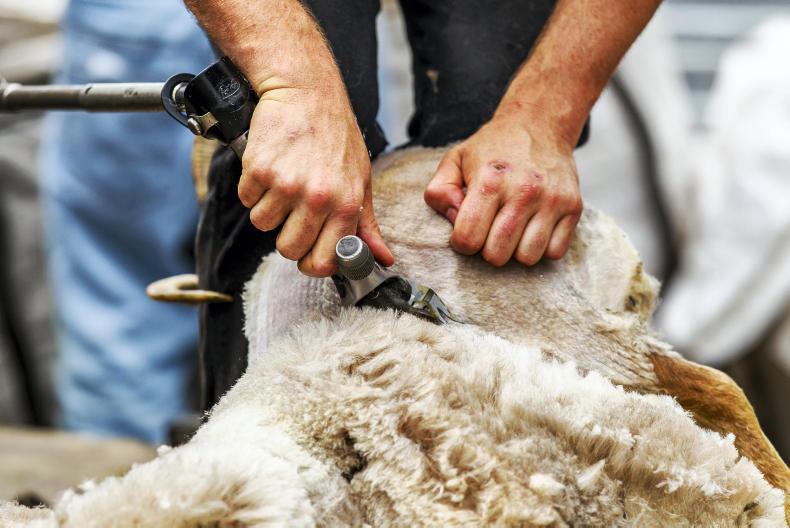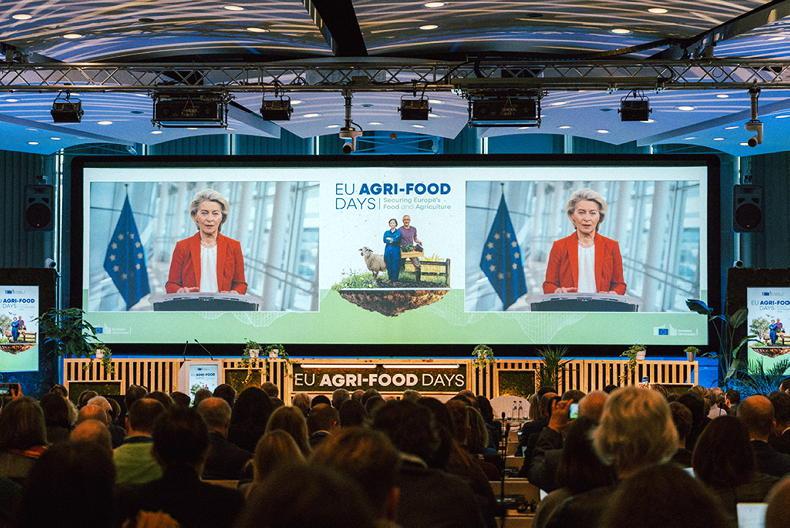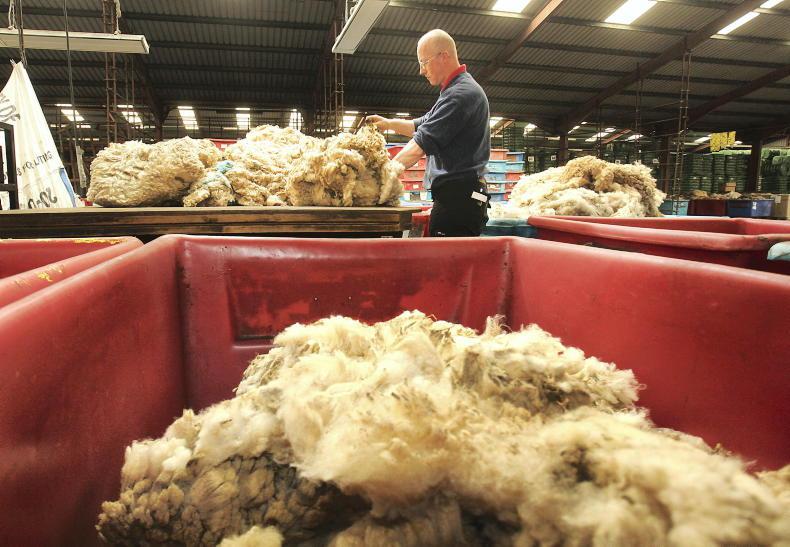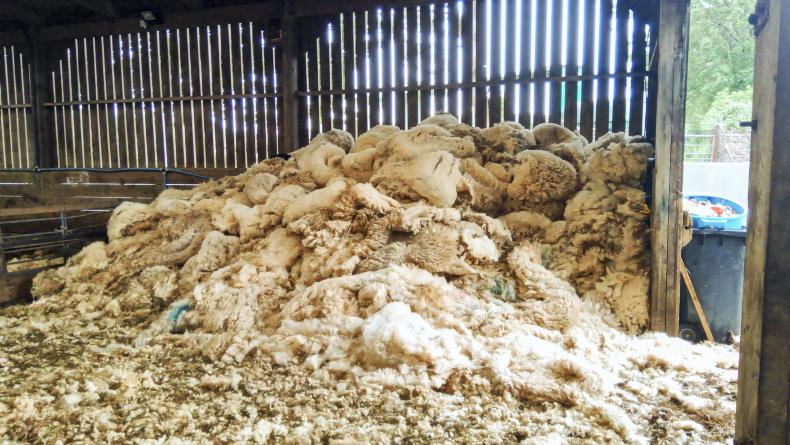Attention is slowly turning to shearing, with questions arising from farmers and shearing contractors as to whether shearing will be allowed to take place and, if so, what coronavirus-related regulations are likely to be in place.
On the first question, sheep shearing is a practice that safeguards animal welfare and, therefore, is a practice that will almost certainly be permitted, albeit with tight regulations.
The Irish Sheep Shearing Association (ISSA) reports that it is currently in discussions with the Department of Agriculture regarding recommended guidelines that will ensure both shearers and farmers are protected in the process.
The ISSA hopes to have these guidelines finalised and released by the middle of next week.
UK guidelines
Meanwhile, the National Association of Agricultural Contractors (NAAC), which represents contractors in the UK, has published guidelines in a checklist format for shearers and farmers.
The document, which is supported by sheep organisations across England, Northern Ireland, Scotland and Wales, is divided into a number of sections including general guidelines, those specific to machinery and equipment, preparation for the farm visit and the responsibilities of shearers and farmers.
They are detailed below and can act as a good guide for Northern Ireland and Scottish readers or for readers in Ireland until guidelines are released next week. Further information on shearing advice can be accessed through the British Wool Marketing Board website.
General guidelines
No personnel must be present at shearing if showing symptoms of coronavirus and must follow guidance on self-isolating. Ensure all personnel can maintain a minimum of 2m separation.Hand-washing facilities should be available for everyone to wash hands with soap and water regularly for a minimum of 20 seconds. If handwashing facilities are not available, use hand sanitiser. As a minimum, shearers must wash hands before leaving home, after each farm shearing, at the end of each shearing run, before eating/drinking and on arrival back home. Do not touch your eyes, nose or mouth if your hands are not clean (including if wearing gloves).Cover your mouth and nose with a tissue or your sleeve (not your hands) when you cough or sneeze – ensure all staff are aware - put used tissues in the bin immediately and wash your hands immediately afterwards. Where possible, shearers should travel to jobs in their own vehicle. Extra vehicles may be necessary. If not possible, maintain a 2m separation and keep the window open for ventilation and be careful not to touch your face. On leaving the cab, you must wash your hands with soap and water for 20 seconds or more or use hand sanitiser when you cannot wash your hands. Do not allow any visitors, including children, where shearing is taking place – put up warning notices at entrances.Communicate with shearers and farmers remotely to avoid direct contact.Machinery and equipment
Keep to the one-shearer-one-machine rule. Each shearer must be responsible for their own kit (for example putting up and taking down their machine and dropper) and cleaning. Clean vehicle cabs thoroughly after use by each member of staff using disinfectant - door handles, steering wheel and all areas likely to have been handled. Clean vehicle cabs thoroughly after work and in the morning using disinfectant - door handles, steering wheel and all areas likely to have been handled. Wash hands regularly after touching shared equipment (for example when setting up trailer). Only individual shearers should handle their own shearing kit and only farmers should handle their hurdles/on-farm equipment.Before visiting farms
Have a telephone or email conversation between contractor and farmer to agree how the shearing will operate. Confirm details on the day of shearing to check if anyone’s health has changed. Agree:
That no-one will come into contact with anyone who is self-isolating. There will be no direct contact between shearers and farm personnel, unless necessary to work safely. Agree that everyone will remain at least 2m apart. Ensure that hand-washing facilities are available – or equip personnel with hand sanitiser (agree beforehand who will provide facilities). Plan of work - discuss how sheep will be moved and how social distancing can be maintained. Assume that all surfaces could be contaminated and try to keep separate work areas for contractors and shearers. Ensure that facilities will be available for hand-washing and disinfecting machinery and staff before they leave the farm.Farmer will disinfect all necessary work areas before shearers arrive.On-farm and shearing
Keep everyone at least 2m apart: - Consider making a temporarily partition between stands or not using all available stands;
- Shearers should avoid entering pens at the same time;
- This includes shearers and farm personnel who may be moving sheep – remember, you can spread the virus even if you don’t have symptoms.
Stay a minimum of 2m apart – including in races, shearing pens and during breaks.Following shearing, kick wool off the board to maintain a minimum 2m distance for the wool wrapper at all times or consider using a broom to pull wool off the boards. Disinfect shearing equipment between each farm and retain one set of equipment for each shearer. Change clothing and moccasins before moving to the next farm; bag clothes at each site and wash before wearing again. Wash hands for 20 seconds before leaving the farm.Farmer’s responsibilities
Liaise with your shearer (see above) and work in partnership to protect everyone’s health. Ensure you, your staff and shearers remain at least 2m apart at all times.Provide hand-washing facilities where possible, otherwise provide hand sanitiser. Please be ready and prepared for your shearer’s visit. The industry will be under additional pressure this year and it will be important to have well-presented sheep ready to be shorn when the team arrives. Please follow best practice including: - Well-designed handling system.
- Take appropriate measures to ensure sheep presented for shearing do not have full stomachs, by yarding appropriately without food or water ahead of shearing.
- No wet sheep, no dags.
- Do not combine drenching, parasite control or other procedures at the same time as shearing.
- Provide a safe, level, dry area for shearing.
Disinfect the work area and surfaces before shearers arrive. Do not allow any visitors, including children, where shearing is taking place – put up warning notices at entrances. Ensure personnel remain at least 2m apart, even in raceways and loading the shearing trailer. Allow shearers to move away before approaching the trailer.
Attention is slowly turning to shearing, with questions arising from farmers and shearing contractors as to whether shearing will be allowed to take place and, if so, what coronavirus-related regulations are likely to be in place.
On the first question, sheep shearing is a practice that safeguards animal welfare and, therefore, is a practice that will almost certainly be permitted, albeit with tight regulations.
The Irish Sheep Shearing Association (ISSA) reports that it is currently in discussions with the Department of Agriculture regarding recommended guidelines that will ensure both shearers and farmers are protected in the process.
The ISSA hopes to have these guidelines finalised and released by the middle of next week.
UK guidelines
Meanwhile, the National Association of Agricultural Contractors (NAAC), which represents contractors in the UK, has published guidelines in a checklist format for shearers and farmers.
The document, which is supported by sheep organisations across England, Northern Ireland, Scotland and Wales, is divided into a number of sections including general guidelines, those specific to machinery and equipment, preparation for the farm visit and the responsibilities of shearers and farmers.
They are detailed below and can act as a good guide for Northern Ireland and Scottish readers or for readers in Ireland until guidelines are released next week. Further information on shearing advice can be accessed through the British Wool Marketing Board website.
General guidelines
No personnel must be present at shearing if showing symptoms of coronavirus and must follow guidance on self-isolating. Ensure all personnel can maintain a minimum of 2m separation.Hand-washing facilities should be available for everyone to wash hands with soap and water regularly for a minimum of 20 seconds. If handwashing facilities are not available, use hand sanitiser. As a minimum, shearers must wash hands before leaving home, after each farm shearing, at the end of each shearing run, before eating/drinking and on arrival back home. Do not touch your eyes, nose or mouth if your hands are not clean (including if wearing gloves).Cover your mouth and nose with a tissue or your sleeve (not your hands) when you cough or sneeze – ensure all staff are aware - put used tissues in the bin immediately and wash your hands immediately afterwards. Where possible, shearers should travel to jobs in their own vehicle. Extra vehicles may be necessary. If not possible, maintain a 2m separation and keep the window open for ventilation and be careful not to touch your face. On leaving the cab, you must wash your hands with soap and water for 20 seconds or more or use hand sanitiser when you cannot wash your hands. Do not allow any visitors, including children, where shearing is taking place – put up warning notices at entrances.Communicate with shearers and farmers remotely to avoid direct contact.Machinery and equipment
Keep to the one-shearer-one-machine rule. Each shearer must be responsible for their own kit (for example putting up and taking down their machine and dropper) and cleaning. Clean vehicle cabs thoroughly after use by each member of staff using disinfectant - door handles, steering wheel and all areas likely to have been handled. Clean vehicle cabs thoroughly after work and in the morning using disinfectant - door handles, steering wheel and all areas likely to have been handled. Wash hands regularly after touching shared equipment (for example when setting up trailer). Only individual shearers should handle their own shearing kit and only farmers should handle their hurdles/on-farm equipment.Before visiting farms
Have a telephone or email conversation between contractor and farmer to agree how the shearing will operate. Confirm details on the day of shearing to check if anyone’s health has changed. Agree:
That no-one will come into contact with anyone who is self-isolating. There will be no direct contact between shearers and farm personnel, unless necessary to work safely. Agree that everyone will remain at least 2m apart. Ensure that hand-washing facilities are available – or equip personnel with hand sanitiser (agree beforehand who will provide facilities). Plan of work - discuss how sheep will be moved and how social distancing can be maintained. Assume that all surfaces could be contaminated and try to keep separate work areas for contractors and shearers. Ensure that facilities will be available for hand-washing and disinfecting machinery and staff before they leave the farm.Farmer will disinfect all necessary work areas before shearers arrive.On-farm and shearing
Keep everyone at least 2m apart: - Consider making a temporarily partition between stands or not using all available stands;
- Shearers should avoid entering pens at the same time;
- This includes shearers and farm personnel who may be moving sheep – remember, you can spread the virus even if you don’t have symptoms.
Stay a minimum of 2m apart – including in races, shearing pens and during breaks.Following shearing, kick wool off the board to maintain a minimum 2m distance for the wool wrapper at all times or consider using a broom to pull wool off the boards. Disinfect shearing equipment between each farm and retain one set of equipment for each shearer. Change clothing and moccasins before moving to the next farm; bag clothes at each site and wash before wearing again. Wash hands for 20 seconds before leaving the farm.Farmer’s responsibilities
Liaise with your shearer (see above) and work in partnership to protect everyone’s health. Ensure you, your staff and shearers remain at least 2m apart at all times.Provide hand-washing facilities where possible, otherwise provide hand sanitiser. Please be ready and prepared for your shearer’s visit. The industry will be under additional pressure this year and it will be important to have well-presented sheep ready to be shorn when the team arrives. Please follow best practice including: - Well-designed handling system.
- Take appropriate measures to ensure sheep presented for shearing do not have full stomachs, by yarding appropriately without food or water ahead of shearing.
- No wet sheep, no dags.
- Do not combine drenching, parasite control or other procedures at the same time as shearing.
- Provide a safe, level, dry area for shearing.
Disinfect the work area and surfaces before shearers arrive. Do not allow any visitors, including children, where shearing is taking place – put up warning notices at entrances. Ensure personnel remain at least 2m apart, even in raceways and loading the shearing trailer. Allow shearers to move away before approaching the trailer. 









SHARING OPTIONS